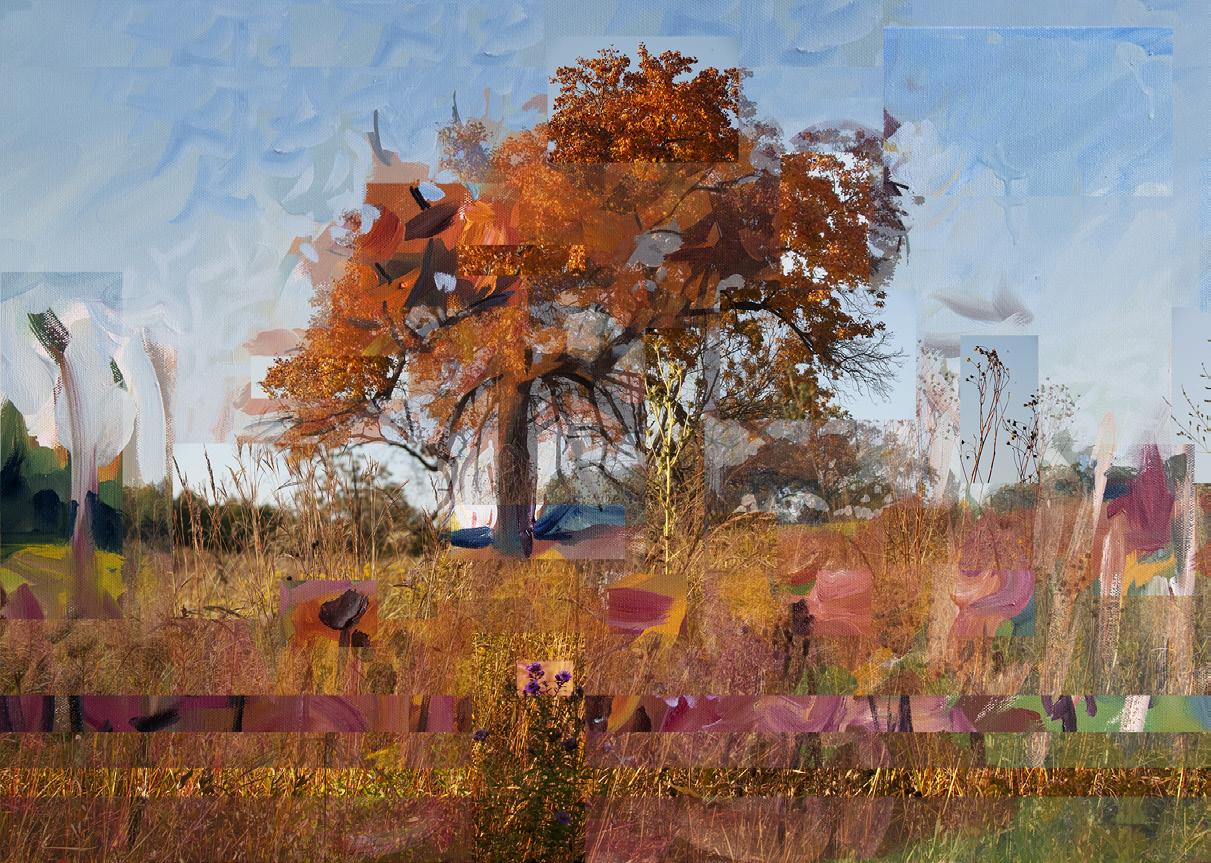arboretum magazine

Experience the Arboretum’s awe-inspiring trees this fall Natural Wonders

by



Experience the Arboretum’s awe-inspiring trees this fall Natural Wonders

by

ANDREW GAPINSKI
It has been a remarkable growing season, hasn’t it? Plenty of rainfall and seasonable temperatures have yielded a bounty of blooms (and weeds!) and an abundant harvest, replenishing the landscape at the Arboretum after several years of drought and ushering in a spectacular fall color season.
If you’re like me, the shorter days and cool, crisp nights of autumn are a welcome change and result in the spectacular color transitions we see happening all around us. With the fading daylight, chlorophylls — the green pigments that make leaves green — are broken down more quickly than they can be replenished, revealing the yellow and orange pigments (carotenoids) that are also present but masked during the growing season. Red and purple pigments (anthocyanins) are produced actively in the bright autumn
OCTOBER/NOVEMBER 2024, VOL. 43, N O 5
sunlight, so these colors are most vivid in years with fewer cloudy days.
Of course, no trip to the Arboretum to view the fall foliage is complete without a stop at the AppleHouse — located just 1.5 miles west of the Arboretum’s main entrance — for apples, pumpkins, squash and gourds. The AppleHouse is located on the site of the Arboretum’s Horticultural Research Center, home to the University’s internationally renowned breeding program that has released hundreds of proven cold-hardy plants over the past 150 years.
University of Minnesota-developed apples including Honeycrisp, SweeTango® and my personal favorite, First Kiss®, are available for purchase, along with other products from the University’s College of Food, Agricultural and Natural Resource Sciences (CFANS). Visitors can find specialty meats, ice cream and other products from CFANS that are also featured in the Arboretum’s new cafe — Rootstock.
In this season of thanks, I’d like to extend my gratitude to our community of staff, members, volunteers, donors, trustees and others whose support makes all of this possible. Your efforts contribute to the beauty of the gardens and landscapes and help to realize the invaluable education, research and conservation work that sets us apart. Thank you!
Arboretum Magazine is published by the Minnesota Landscape Arboretum. The Arboretum is part of the College of Food, Agricultural and Natural Resource Sciences (CFANS) at the University of Minnesota. The magazine is a benefit of Arboretum membership. To request a copy of this publication in an alternate or digital format, please call 612-301-1257.
© 2024 Regents of the University of Minnesota. All rights reserved. The University of Minnesota is an equal opportunity educator and employer.
arb.umn.edu 612-624-2200 arbinfo@umn.edu
Elise Bremer, Editor
Brenda Drake Lesch, Art Director
Andrew Gapinski, Executive Director
Matthew Clark, Ph.D., Director of Research
Rachelle Crosby, Director of Facilities & Project Management
Timothy S. Kenny, Director of Education
Jared Rubinstein, Director of Horticulture & Collections
David Senior, Director of Business & Finance
Susan Taylor, Ph.D., Director of Advancement
Tom Lany, Senior Marketing & Communications Manager
Glenn Stolar, President, Arboretum Foundation
ANNIE GUNNESS • NATURAL RESOURCES HORTICULTURIST
Have you ever experienced a jolt of concern on a visit to the Arboretum after spotting smoke and flames rising from the Bennett-Johnson Prairie? While this sight might be alarming to visitors, it’s actually part of a carefully calculated management plan for the Arboretum’s natural areas.
Prescribed fire is a management strategy commonly used to restore and maintain prairie ecosystems. Prior to European settlement, fire disturbance occurred over thousands of years and prairies evolved under conditions of periodic fire. At the Arboretum, horticulturists focused on natural resources use prescribed fire as a tool to mimic this disturbance to benefit native species while suppressing undesired invasive or non-native species based on the time of year.
Prescribed fire conducted in the fall can encourage the growth of forb species such as prairie clover, blazing stars, asters or coneflower. In contrast, a spring fire can help suppress non-native cool-season grasses such as smooth brome or Kentucky bluegrass and reduce tree and shrub density. Spring fires also encourage the growth of native warm-season grasses including big bluestem, switchgrass and sideoats grama. Last year, more than 25 acres were burned in the Prairie and Spring Peeper Meadow in the fall.
Although prescribed fire has many benefits, the practice may also have unintended consequences for wildlife, including invertebrates, if not conducted properly. To protect wildlife, Arboretum horticulturists carefully consider and maintain records about the timing — or season — of prescribed fire, the frequency or cadence of the burn in a given area and then ensure that sections of the prairie are left unburned in a particular season.
The best management practices for prescribed fire include conducting a pre-burn survey for rare bumble bees, butterflies and other target wildlife species; burning no more than one-third of habitat in a given cycle; burning based on project goals; mowing fire breaks to create patches of unburned areas; and mapping the extent of each fire for record keeping.
Head to the Arboretum’s blog at arb.umn.edu/ blog/prescribed-fire for a longer version of this story and keep an eye out for the team of natural resources horticulturists preparing for a prescribed fire this fall.

MATT SCHUTH • NATURALIST
The cedar waxwing is one of Mother Nature’s most vivid creations. Their bold yet harmonious look features a soft cinnamon to olivebrown back and chest, lemon yellow belly, black face mask lined in white, tail feathers culminating in yellow terminal bands and bright red waxy tips punctuating soft gray wings.
For 2,000 years, it was believed that waxwing feathers glowed in the dark. Their feathers were reported to “shine like flames” by Roman nature historian Pliny the Elder.
In North America, the cedar waxwing is the most specialized fruit-eating bird and 70 percent of its diet consists of fruit. The carotenoid pigments in red fruit account for the bright red dabs that decorate feather tips. Immature birds have zero to five red tips while older birds have greater than nine. The number may signal information about age and social status to the rest of the flock. Yellow terminal bands on the tail feathers are also a result of the fruit diet of the waxwing.
Bombycilla (silk tail) cedrorum (it eats juniper berries) is the aptly chosen scientific name for the cedar waxwing. The blue berries, or cones, of the eastern red cedar are the main food supply for northern populations.
Cedar waxwings are the second-latest songbird nester. Eggs are laid from June through August with some nests still active as late as October. This late nesting coincides with seasonal fruit ripening. Baby birds are fed insects the first few days and then get a grown-up diet of fruit.
A flock of these birds is called an “ear-full,” an ironic name as unlike most of the roughly 5,000 other songbirds, they have no songs. They have relatively soft, high, whistling call notes of “zree-zree,” which they use to communicate.
Waxwings live in flocks and feed together, embodying a sense of community and a desire to share the fruits of their labor, a lesson in living for all to learn. Nomadic cedar waxwings are always in search of fruit and can often be spotted around the Arboretum, especially in the Crabapple Collection in fall and winter.

Debra and Rob Frimerman began to truly explore the Arboretum and all it offers with their daughter, Eva, during the COVID-19 pandemic.

If you ever wondered how much the human voice can convey through lilt and timbre and emotion, you should talk to Debra and Rob Frimerman.
For instance, really listen to them talk about the Arboretum. Their words are revealing — more on that in a second — but even if they spoke in a language you didn’t know, you’d feel in your bones they are excited about the Arboretum. We do rely on the power of their words in this article, however, so…
Rob: “The Arb is a great way to reset and recenter and restart.”
Debra: “It’s a wonderful sanctuary in nature. Not every metro area has that.”
Rob: “It’s so thoughtfully curated. You’ll find something that resonates with you.”
Debra: “The Arboretum is just a special place to us.”
The Frimermans didn’t discover that special place for themselves until fairly recently. “We really didn’t appreciate all that the Arboretum offers until 2020, during the COVID pandemic,” said Debra. “Then we began exploring the Arb with our daughter, Eva, and we fell in love with it.”
Since then their family has enjoyed — take a breath — trail hiking, maple
syrup tapping, fairy garden-making, garlic harvesting, Taste & Toasting, firefly viewing and marveling at the hives outside the Tashjian Bee and Pollinator Discovery Center.
It’s clear why the Frimermans are drawn to the Arboretum’s mission. Debra is an attorney and chief business development officer for Pivot Bio, a sustainable agriculture company aiming to replace synthetic fertilizer. Rob works in finance and leads sustainability initiatives at Wells Fargo. One of them is Wells Fargo Wednesdays at the Arboretum, where his company’s employees can volunteer every Wednesday morning.
All this deep resonance — synchronous vibration — has moved the Frimermans to support the Arboretum’s annual fund and Gala and to become members of the Leon Snyder Heritage Society through a planned gift.
Why a planned gift? Don’t just read their answers, listen to them: “We want to help the Arboretum continue thriving in the future,” said Debra, and, added Rob, “be noticed.”
To learn more about joining the Leon Snyder Heritage Society, please contact arbgiving@umn.edu

While a bottle of classic maple syrup might be a staple of weekend brunch, did you know there are other tree species that can be tapped for their syrup? Each spring, the Arboretum taps more than 300 maple trees in the Sugar Bush above Frog Hollow. Now, a team of researchers from the Department of Horticultural Science is exploring the emerging practice of tapping black walnut trees for syrup production. The innovative practice offers a sustainable approach to diversifying our food systems and increasing forest resiliency.
Black walnut trees ( Juglans nigra L.) are native to North America and are a highly adaptable species, thriving in a variety of soil conditions and climates. By incorporating black walnut trees into syrup production, we can diversify tree usage, reduce dependence on sugar maples and mitigate risks of crop failure from disease or climate change.
The process of tapping black walnut trees requires basic equipment similar to that used for maple tapping, including spiles, collection buckets or bags and a drill to make a small hole in the tree for the spile. Once collected, the sap must be stored at a cool temperature until it is boiled down to concentrate the sugars, resulting in a unique and flavorful syrup.
To explore the potential of black walnut syrup further, the research team hosted a taste panel at the Horticultural Research Center. This panel aimed to gauge consumer acceptability of several black walnut syrups, compare their responses to maple syrup and characterize consumers’ perceptions of black walnut flavor attributes. Preliminary results suggest that black walnut syrup displays diverse flavor profiles depending on the supplier, often featuring caramelized butterscotch and nutty flavor attributes. Overall well-liked, black walnut syrup sometimes surpasses maple syrup in flavor and appearance, supporting its integration for diverse and sustainable food systems. Further research focusing on optimal tapping times, sap chemistry and processing techniques’ impacts on syrup flavor can provide essential knowledge for maximizing the potential of this valuable species. Visit the Arboretum’s annual Maple Fest, held in the spring, to learn more and visit the walnut grove.
This research was made possible through funding from USDA-NIFA grant number 2023-67013-39512.
Give to the Max Day — on Nov. 21, 2024 — is Minnesota’s annual day of giving when communities across the state come together to provide vital support for organizations such as the Minnesota Landscape Arboretum.
One of the passionate champions for supporting the Arboretum on Give to the Max Day is Jennifer Allen, a member of the Arboretum’s Board of Trustees since 2018. As chair of the Development Advisory Committee, Allen organizes an incredible matching gift from the board each year that multiplies donations made on Give to the Max Day to create an even greater impact.
Jennifer and her husband Mark’s initial involvement with the Arboretum began nearly 20 years ago following a time of deep sadness — the loss of the couple’s first pregnancy due to a genetic abnormality.
As the Allens processed their grief, they learned they could memorialize their precious baby, Hope, with the naming of a crabapple tree at the Arboretum. When the tree bursts with deep pink blossoms each spring, they are reminded of Hope and the healing power of nature.
“It’s been an integral part of our grieving and healing process for our daughter Hope because it’s such a hopeful, peaceful, encouraging place to come and visit.”
The Allens went on to have a daughter, Audrey, now 17, who has grown up coming to the Arboretum, which the family treasures in all seasons.
Jennifer hopes others touched by the Arboretum’s beauty will consider supporting the Arboretum on Give to the Max Day so it can remain a vibrant resource for the community and continue to grow and thrive. “I’m really excited to see this next chapter for the Arboretum,” she said.
She especially loves seeing other members of the Arboretum community get involved on Give to the Max Day. Last year, for example, member Anna Goyette donated to the Arboretum, writing on the Give to the Max page: "The Arb is my happy place! It is my serenity and fills me year round with the sounds, smells and beauty of nature! I smile the second I drive through that entrance! It is a blessing to so many!"
To learn more about Give to the Max Day and to join the Arboretum on Nov. 21, visit z.umn.edu/ArbGive
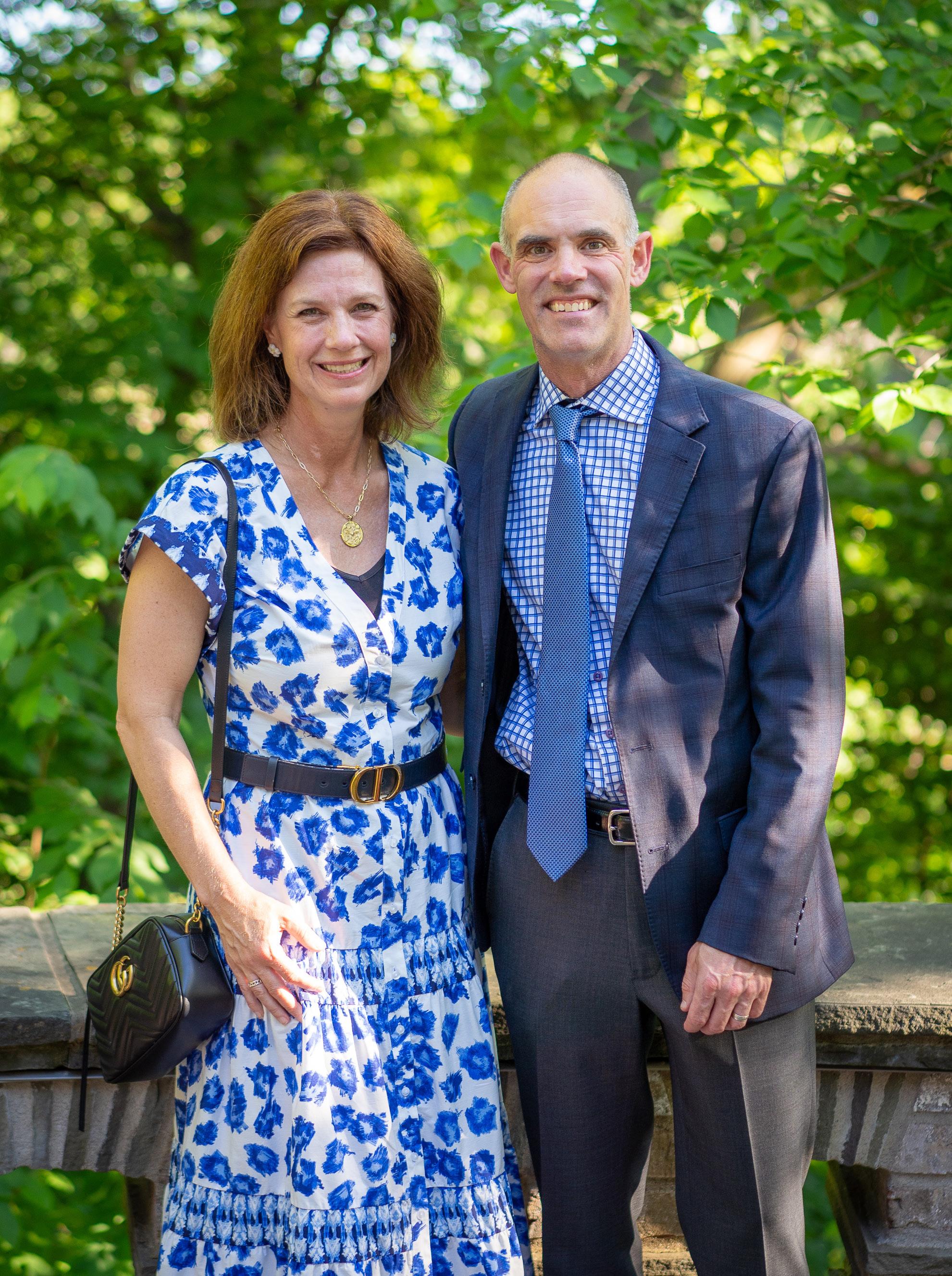

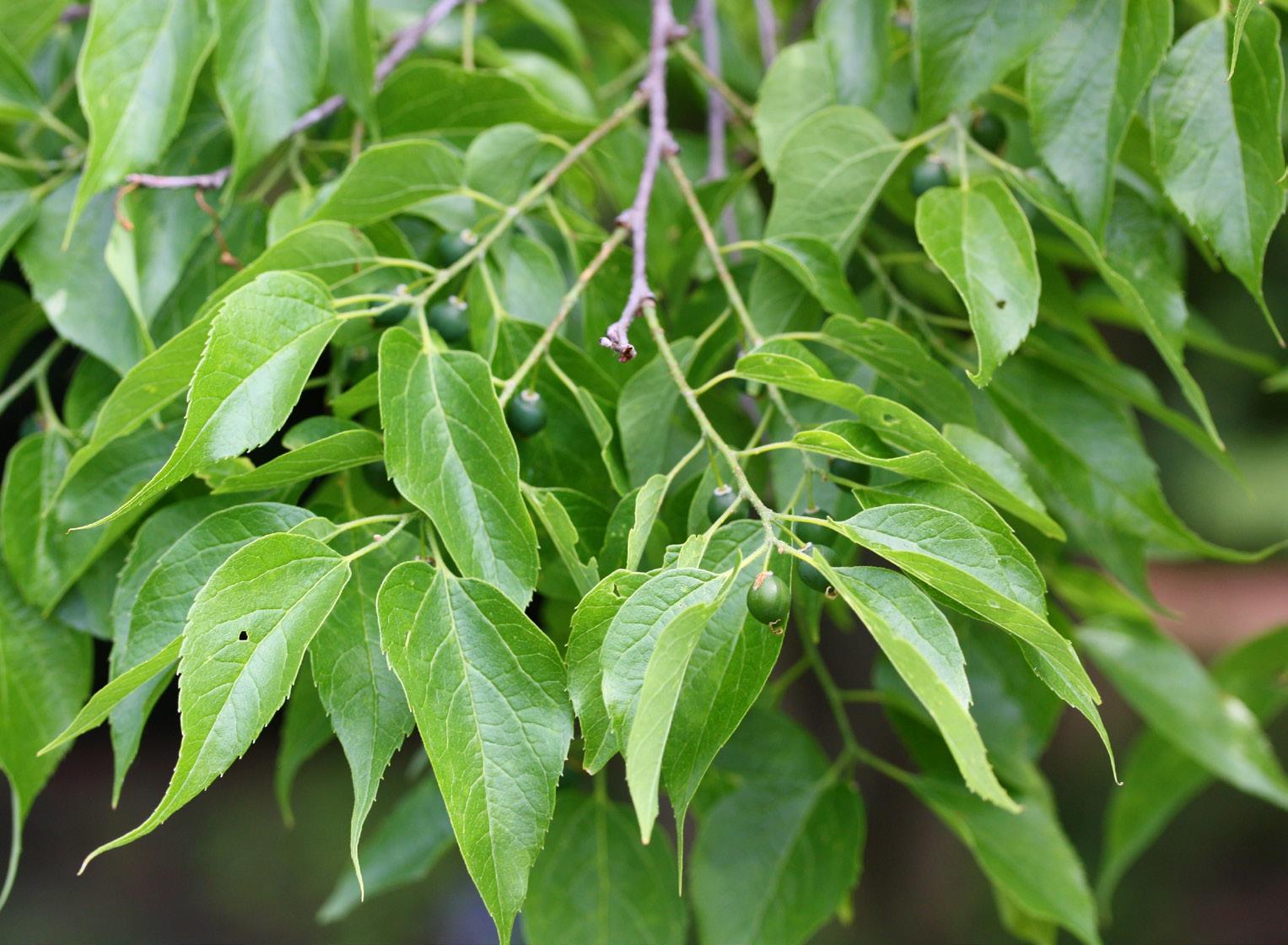

As Minnesota’s climate changes, forward-thinking gardeners and city managers are planting trees that can handle the impacts of climate change. According to the State Climatology Office, average temperatures across the state have risen by 3 degrees since 1895. Minnesota has also seen a significant increase in extreme rainstorms, particularly in the past two decades.
As temperatures rise and more frequent extreme weather events occur, familiar Minnesota tree species that shade backyards and line city boulevards might not be the best adapted to these changes.
Trees provide myriad ecological and socioeconomic benefits for neighborhoods and cities: They sequester carbon, provide habitat (and sometimes food) for wildlife and cool homes and cities with the shade they provide. On sunny days, mature shade trees decrease the pavement temperature by up to 30 degrees and reduce home cooling bills by up to 25 percent.
“If you’re a homeowner, trees are the only infrastructure that grows in value year over year. Planting climate-resistant trees means they will live longer, grow larger and increase your property value over time,” said Arboretum arborist Ian Vaughan.
Planting trees that are well-adapted to the changing climate ensures that future generations will reap these same benefits.
While climate change threatens some beloved Minnesota tree species, there are plenty of amazing tree options that experts expect to thrive in the coming years. Many of these have wide native ranges across the eastern U.S., but may be new to Minnesota gardeners. There are many to choose from, but here are five favorites visitors can find at the Arboretum.
Celtis occidentalis
In places where Dutch elm disease has wiped out American elms, some people are replacing elms with the native hackberry for its similar leaves, size and shape. My favorite trait is its ability to handle both flooding and drought. You may ask, how can a tree be adapted to both droughts and


floods? It might be because the hackberry is native to floodplains where water levels constantly go up and down. In the fall and winter, the edible berries support fruit-eating birds and small mammals.
Quercus bicolor
I’m a big fan of oak trees, and the swamp white oak is a favorite for its naturally crooked branch structure and broad, inviting canopy. This Minnesota native tree is expected to thrive in our changing climate thanks to its tolerance for heat, flooding and drought. Because oaks are longlived and need a lot of space to spread their roots, plant them far away from pavement, powerlines or waterlines.
Gymnocladus dioicus
While this species is native to northern Kentucky, it is also found in southern Minnesota. It withstands hot and dry summer weather, which is
good news for Minnesota gardeners as we continue to see more 90-degree days. It is often planted along parking lots and boulevards since it handles poor soils and heat radiating from pavement. If its showy, large seed pods are a deal-breaker for your site, try the University of Minnesota-developed ‘Stately Manor’ cultivar, which is seedless.
Carya ovata
I learned to love this massive nut tree as a camp counselor in Iowa, where old hickories stand tall in the woods along the Des Moines River. Once mature, this tree features “shaggy” peeling bark, and the nuts are edible. Native across the eastern U.S., shagbark hickory handles warmer winters and summers, periodic droughts and flooding. Several other, less-hardy hickory species such as mockernut, black and pignut hickory are slowly moving north into southern Minnesota as winters get warmer.
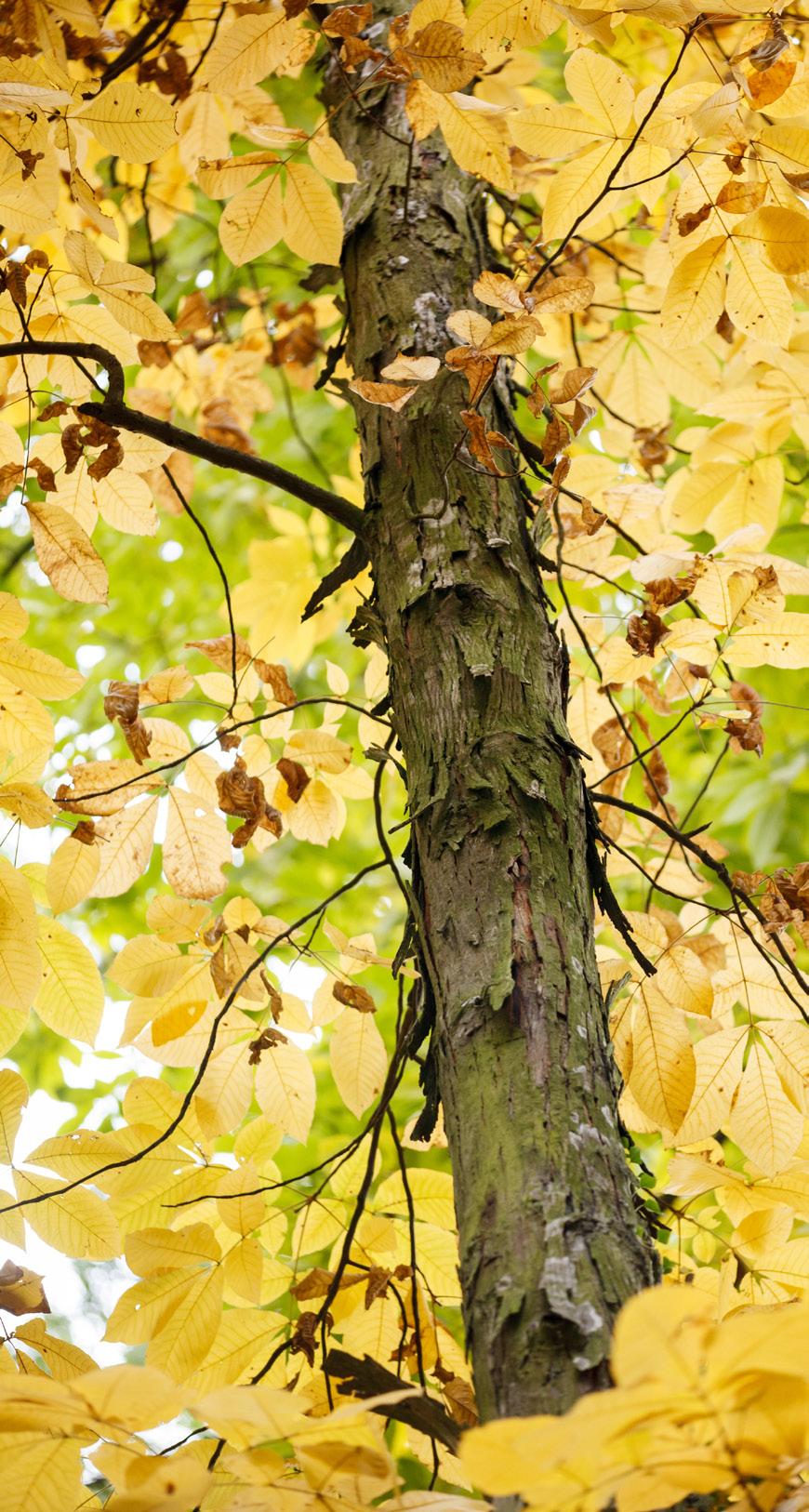
Cladrastis kentukea
For smaller spaces, consider the yellowwood tree, which tops out around 30 feet tall and produces fragrant white blooms that feed pollinators in the spring. While native to the southern U.S., it has proven hardy enough for Twin Cities winters. Once established, it can withstand periods of drought and heavy rainfall, making it a climate change-ready tree option for Minnesota.
Other climate-ready trees recommended by Arboretum experts include ironwood, tulip poplar, eastern redbud, katsura tree, northern catalpa and bald cypress.
As I walk around community parks in the Twin Cities metro, I feel hopeful. City managers see the need for diverse trees that will thrive in the coming years and provide benefits for future generations. You can help by planting a tree for the future in your own yard. Visit z.umn.edu/climate-readytrees to hunt for these trees at the Arboretum and learn about more climate-ready trees.
Since the Kitchen Classroom in the Myers Education Center opened last year, the Adult Education culinary program has been growing rapidly, serving up fresh ideas and connecting more people with the plants we rely on for food.
To support this exciting next stage in the development of the Arboretum’s culinary programming, Chef Shelagh Mullen has joined the team to provide quality culinary instruction right here at the Farm at the Arb.
Chef Shelagh (pronounced like “Sheila”) comes to the Arboretum with a host of experience in the culinary world, and has spent the past 18 years teaching cooking classes and leading culinary tours of the “Emerald Isle,” Ireland. Chef Shelagh hopes to reach as many guests as possible to share the joy of preparing seasonably wholesome meals, and calls herself a “food designer,” reflecting her belief that food is central to both business and life.
While words might work for most introductions, a chef’s true introduction is through their food. To better introduce herself, Shelagh invites you to try her flavorful and wholesome squash pancakes recipe, incorporating squash — available at the Arboretum’s AppleHouse — and University of Minnesotadeveloped Kernza® flour.
2 cups (260 g) all-purpose flour
½ cup (64 g) Kernza® flour or whole wheat flour
½ cup (60 g) rolled or quick oats
1 tablespoon baking powder
1 teaspoon cinnamon
1 teaspoon kosher salt
¼ cup (84 g) honey
½ cup (130 g) pureed butterkin squash (or any sweet squash)
2 eggs
2 cups buttermilk
2 tablespoons butter melted, plus 2 tablespoons extra for griddle
1 teaspoon vanilla extract
In a large bowl, whisk together the dry ingredients. In a separate bowl, whisk together the wet ingredients. Combine the wet with the dry ingredients; do not overmix.
Heat a griddle over medium-low heat. Brush the pan with some extra melted butter. Drop a ¼ cup of batter on the hot griddle. Cook until the edges look set, about 2 minutes. Flip and cook the other side until cooked through, about 1-2 more minutes. Repeat. Serve with maple syrup, toasted pepitas, whipped cream and seasonal fruit.
Find all upcoming food and wine classes and register at arb.umn.edu/food-wine-classes.
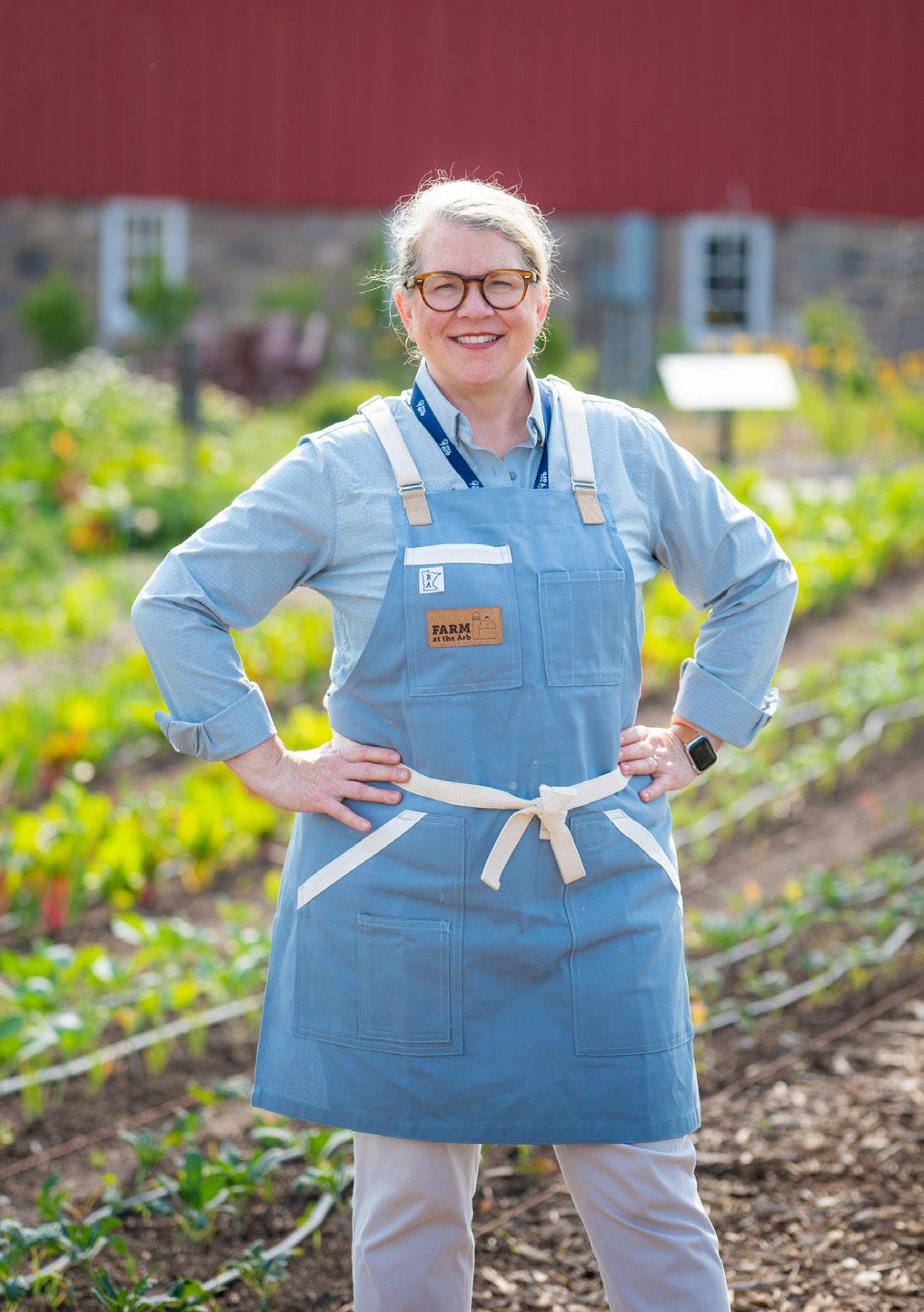

LILY SMITH • SOCIAL MEDIA COORDINATOR
The AppleHouse is a beloved staple at the Arboretum as temperatures start to cool. Known for its copious supply of apples, pumpkins, squash, gourds and seasonal decor, there’s more to the AppleHouse than meets the eye. Many people don’t know that the AppleHouse sits on 230 acres of land where University of Minnesota researchers develop cold-hardy plants at the Horticultural Research Center (HRC).
The HRC is part of the University of Minnesota’s Department of Horticultural Science within the College of Food, Agricultural and Natural Resource Sciences (CFANS). The HRC is notable for breeding plants and new varieties that are cold-hardy for Minnesota’s harsh winters. Since 1908, the HRC has introduced more than 150 plants including 29 different apple varieties. This year, the AppleHouse carries 21 different apple varieties, 16 of which were developed at the HRC. The excitement doesn’t end there as
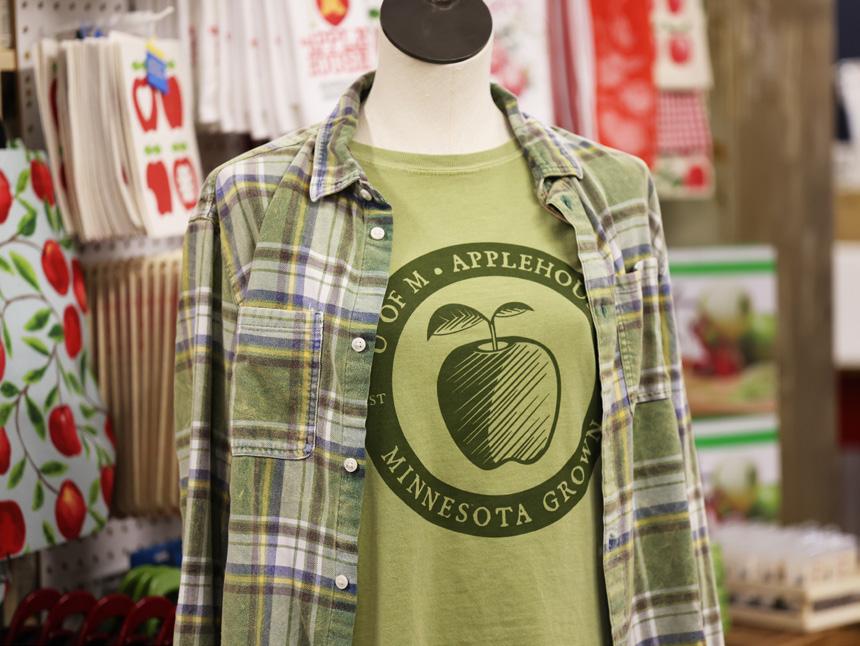
the AppleHouse’s collaboration with CFANS is stronger than ever, featuring numerous University of Minnesota-developed products.
“Again this season, we are excitedly working with the University of Minnesota CFANS department to offer a variety of meat products,” said Treacy Welch, AppleHouse Manager. “New this season, we have an assortment of ice creams from the dairy department on the St. Paul campus.”
The AppleHouse is unique as it serves as the final stop before these locally developed products reach consumers and provides visitors with an

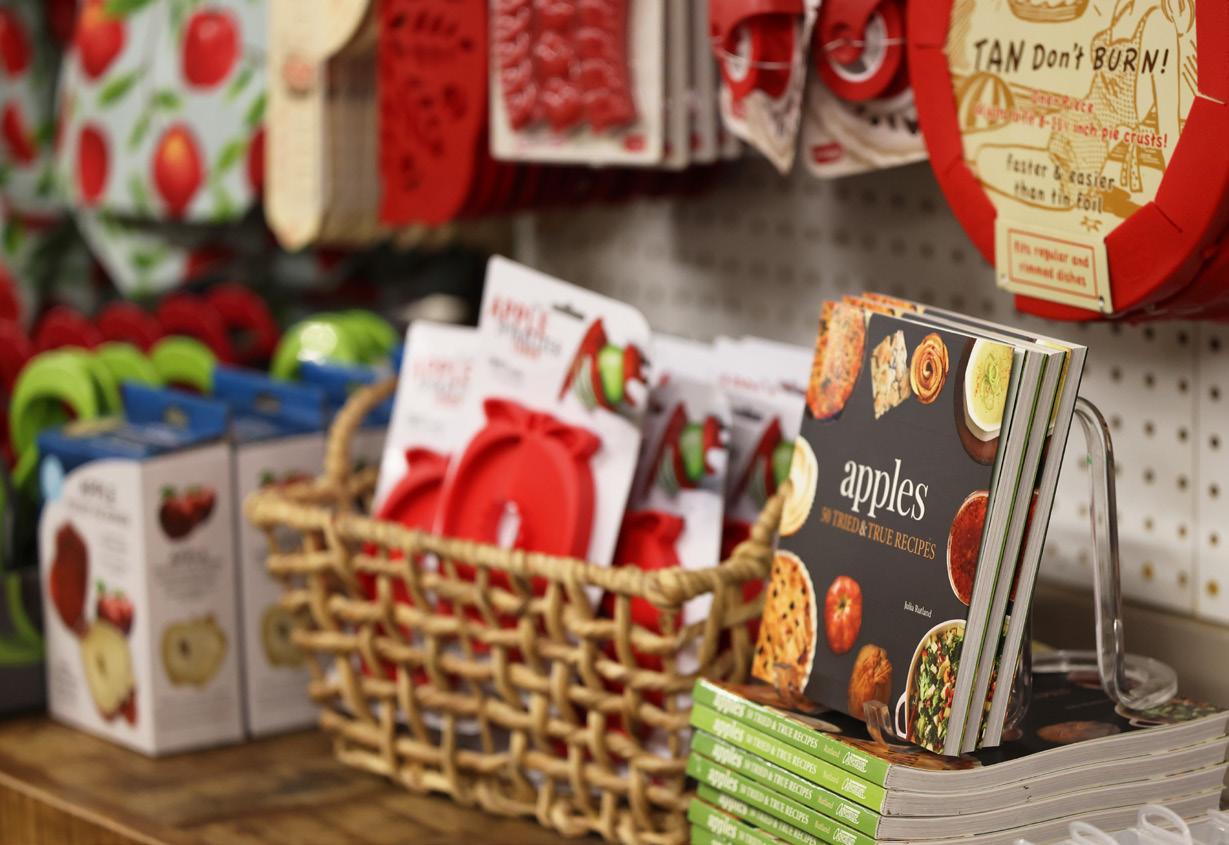
opportunity to see firsthand the results of the ongoing research at the University of Minnesota.
Starting in November, the AppleHouse transitions into the Holiday Boutique, the perfect holiday shopping destination. Shop a wide range of festive gifts, including holiday accessories, children’s toys, sweets and winter squash.
Don’t miss the opportunity to shop at the
Opening in early fall and continuing through the holiday season, the Arboretum’s AppleHouse is stocked with fresh apples, pumpkins, squash and gourds, plus a variety of applethemed fare including apple cider, strudels and pies.
AppleHouse this season! Located 1.5 miles west of the main Arboretum entrance along Highway 5, this destination doesn’t require a reservation or membership. Plus, all proceeds from the AppleHouse support Arboretum research and general operations.
Learn more at arb.umn.edu/AppleHouse. For the most up-to-date apple availability, call the AppleHouse hotline at 612-301-3487.
Find a new way to explore the Arboretum in each season. In addition to 1,200 acres of gardens, plant collections and natural areas, the Arboretum offers a variety of events and activities to enrich your experience and deepen your connection with nature. Events are included with daily admission except where noted. Browse the full schedule of events online at arb.umn.edu/events

Oct. 17, 6:30-9:30 p.m.
Bask in the glow of the full October moon during this special after-hours experience. Visitors will embark on a self-guided hike along Three-Mile Walk illuminated with tealights. Along the way, stop at the Harrison Sculpture Garden to experience a sweeping, panoramic view of the night sky from the highest point in the Arboretum. Programming at the Harrison Sculpture Garden will include:
• Telescopes sighted in on noteworthy celestial objects, as well as astronomy knowledge provided by the Minnesota Astronomical Society;
• Evening access to the Dakota Sacred Hoop Walk;
• And a full moon astrology and zodiac presentation by Sunmi Banjo-Arebojie, president of the Minnesota Chapter of the National Council for Geocosmic Research
Oct. 4-5, 9 a.m.-4 p.m., Oct. 6, 11 a.m.-3 p.m.
The annual Arboretum Auxiliary Harvest Sale offers nature-inspired items including home decor, potpourri, Arboretum wood creations, knitwear for adults and children, beautiful autumnal wreaths and arrangements and many other creative arts. All items are handcrafted by Auxiliary members, and all proceeds benefit the Arboretum. Plus, don’t miss the drawing of this year’s quilt raffle winner on Oct. 5 during the Harvest Sale.
Ongoing
Offered on select Thursdays and Sundays, this series invites participants to experience a variety of yoga classes, including nia, slow flow, vinyasa, yin yoga and more surrounded by the beauty of nature at the Arboretum. Registration costs $7.50 for members and $27.50 for non-members. Find the full schedule and reserve your tickets (required) online.
Oct. 6, 11:15 a.m.
Kids Yoga classes are designed to nurture the mind, body and spirit of your children! Each dynamic and fun-filled session incorporates a blend of breathwork, mediation, movement, rest, games and laughter, all while exploring the wonderful world of yoga. Advance registration required.
Oct. 11-13, 8 a.m.-3:30 p.m.
Experience beautiful fall colors at the Arboretum from trails lined with stunning fall foliage! This event is staggered over three days to prevent overcrowding of the trail space and maximize enjoyment for all participants: Visitors pick their course (1K, 5K or 10K), date and start time. Advance registration is required.
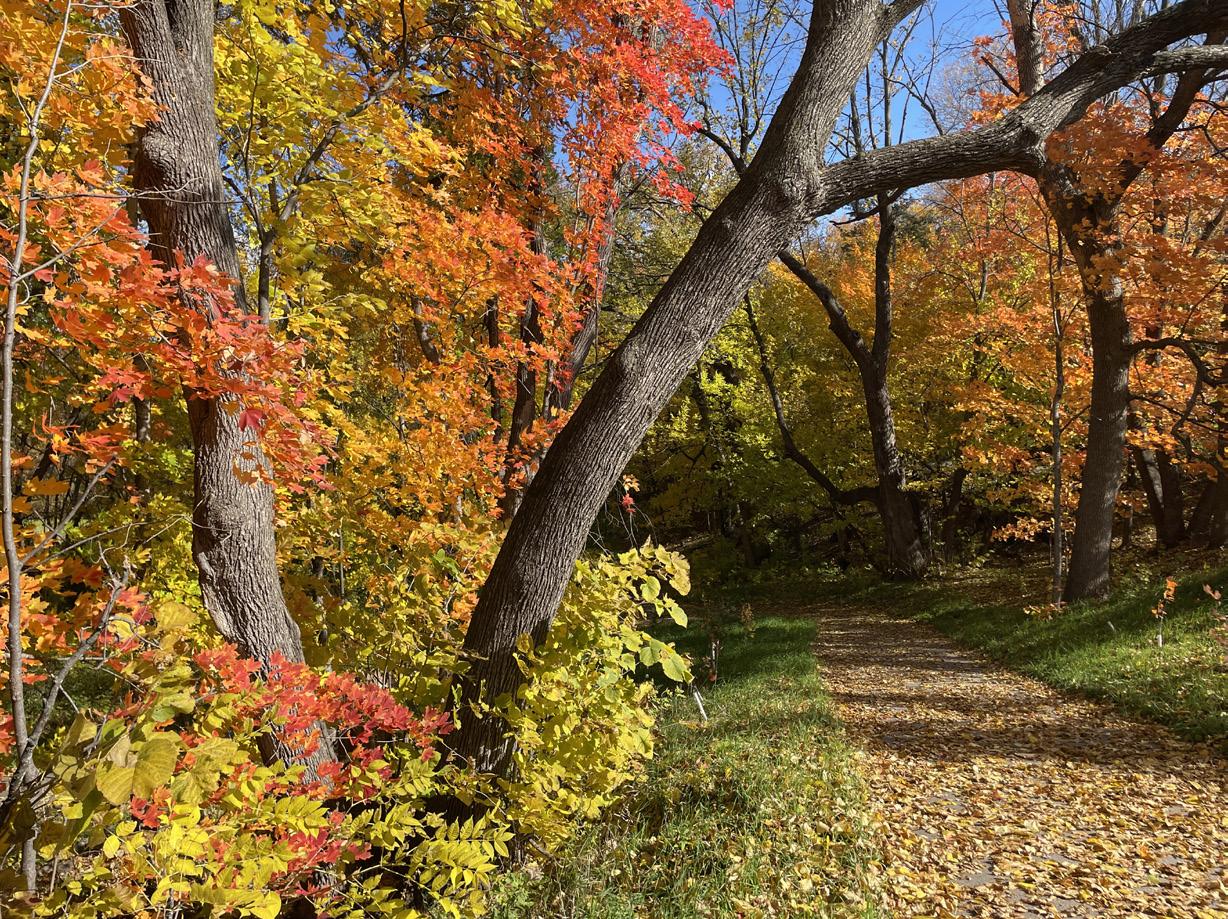

Open select evenings Nov. 21-Jan. 5
Stroll through the Arboretum’s gardens decked out with light displays highlighting flowers, trees and the beauty of nature on a one-mile self-guided walk.
New this year, visitors can explore a woodland-themed light display. Plus, revisit the 16-foot Weeping Willow and walk through a giant apple, a nod to the Arboretum and the Horticultural Research Center as the Home of the Honeycrisp.
For a curated experience, visit one of the Winter Lights special theme nights, including an Opening Night celebration on Nov. 21, Date Nights on Dec. 5 and 12, Family Nights on Nov. 26 and Dec. 19 and a New Year’s Eve Celebration for all ages Dec. 31.
Visitors, including all members, must reserve tickets for Winter Lights. Find more information, including dates and times, and reserve tickets online.
Dec. 14-15
Save the date for this annual holiday market featuring work from local crafters and artisans to find inspiration for even the most hard-to-shop-for recipients. Winter Lights ticket holders can shop special Gift Market hours Saturday, Dec. 14 from 5-10 p.m. during Winter Lights.


Oct. 28, Workshop: 10 a.m.-noon, Book Talk: 2-3 p.m.
Every single day for over a decade, artist Mary Jo Hoffman has made a photograph of found nature — with no subject too small or too ordinary. This daily practice has culminated in "STILL: The Art of Noticing," a collection of breathtaking photographs from Hoffman’s enormous archive, accompanied by perceptive, deeply felt and oftentimes humorous essays illuminating the insights she’s gained along the way. Find additional information and register for one or both events online.
Oct. 4-6, 10 a.m.-4 p.m.
Shop from a curated selection of used books and DVDs on a wide variety of subjects. Thanks to the support of the Arboretum community, this event, hosted by the Friends of the Andersen Horticultural Library, typically raises about $15,000 in support of the library.
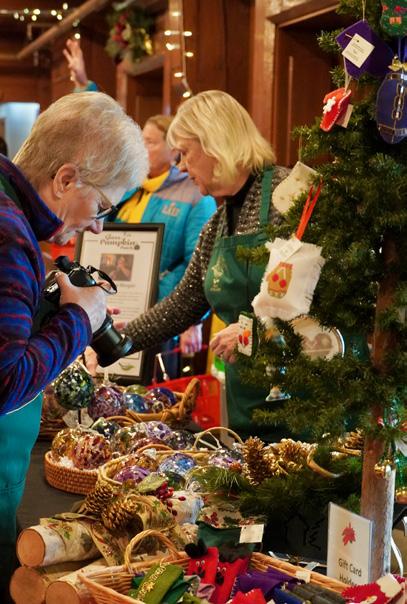
Nov. 13-27
Dec. 6-8
Save the date for the annual Auxiliary Holiday Sale, offering exquisite hand-crafted winter and holiday seasonal gift items. Shop knitwear for the entire family, felted and quilted items, home decor, spa gifts, jewelry, toys, cards and gift tags and more, all in support of the Arboretum. The sale will feature beautiful glass ornaments from the California-based glass artist and Arboretum Glass Pumpkin Patch co-curator, Shannon Jane Morgan.
Arboretum members always receive a 10% discount on Gift & Garden Store purchases, but from Nov. 13-27, members take an additional 10% off purchases at the Gift & Garden Store and AppleHouse and Holiday Boutique for a total discount of 20%.
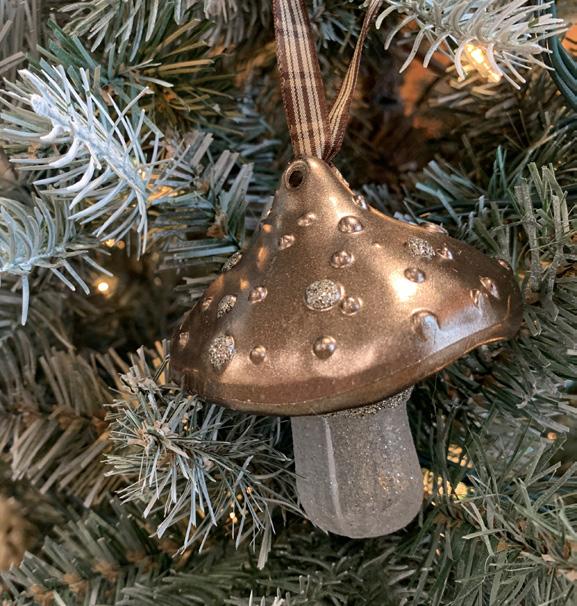
The Arboretum is a wonderful place to learn, thanks to a variety of experts, scenery and plant collections. Prices listed are for members/non-members respectively. See a complete list of classes for adults, children and families at arb.umn.edu/learn. Register online or call 612-301-1210.

Oct. 3, 6:30-8:30 p.m.
Learn how to build flavor with quality ingredients in this class that focuses on whole foods and plants! Instructor Jenny Breen, chef and public health nutritionist, will weave in nutrition information and culinary tricks to help you learn new food skills and cooking techniques to build your pantry and diversify your diet. Participants will learn to make a savory fall curry stew with squash, cauliflower, coconut milk and red lentils, along with a hearty side of cabbage and Brussels sprouts in a dark sesame glaze. Cost is $80/$100.
Creative Capture: Trees (Online)
Oct. 3, 6:30-8:30 p.m.
The terrific textures, shapes and seasonal colors of trees provide an infinite number of photographic opportunities. In this class, award-winning photographer Karen Campbell teaches creative approaches to landscape photography to showcase the environment; portrait photography to capture structure; and macro photography to highlight flowers, leaves, fruits and bark. Participants will learn to select elements of a tree for amazing shots and how to avoid visual distractions and deal with close-up challenges. Cost is $40/$45.


Shinrin-yoku “Forest Bathing”
Oct. 11 or Oct. 25, 8:30-10:30 a.m., or Friday, Nov. 15, 10 a.m.-noon
Join instructor David Motzenbecker, a certified forest bathing guide and award-winning landscape architect, to find tranquility and wellbeing in nature. This Nature Heals Initiative experience includes guided awareness exercises to awaken your senses and calm your mind. Cost is $25/$40.
Nov. 2, 1-4 p.m.
A lichen is more of a lifestyle than an organism — a complicated relationship made up of fungi and algae living together symbiotically. Small but mighty, these amazing organisms make up 8% of the Earth's biomass. Participants will learn about the array of lichens growing throughout the Arboretum; photograph them with their cell phones and connect to the Minnesota Lichen Map on iNaturalist to explore the Arboretum grounds. Cost is $45/$65.

Three-session class: Nov. 2, 9 and 16, 10 a.m.-12:30 p.m.
Enjoy autumn at the Arboretum and capture your experience on canvas! With instructor Olesya Podshivaylova’s guidance, your experience in oil painting will be easier than you think. Registrants will learn to create visual interest, depth and different effects and review techniques for paint application, using brush work to achieve texture, layering, color values and composition. Cost is $159/$204, including supplies.

Editing Essentials: Elevating Flower Images in Lightroom (Online)
Nov. 12, 6:30-8:30 p.m.
Editing is essential to making good photos great. Using before and after images, award-winning photographer, instructor and naturalist Karen Campbell will show essential edits to improve up-close nature imagery using Adobe Lightroom Classic. Participants will learn skills such as universal photo edits, improving luminance, saturation and hue, including using color sliders and masking to edit only parts of the image. All levels are welcome. Cost is $40/$45.
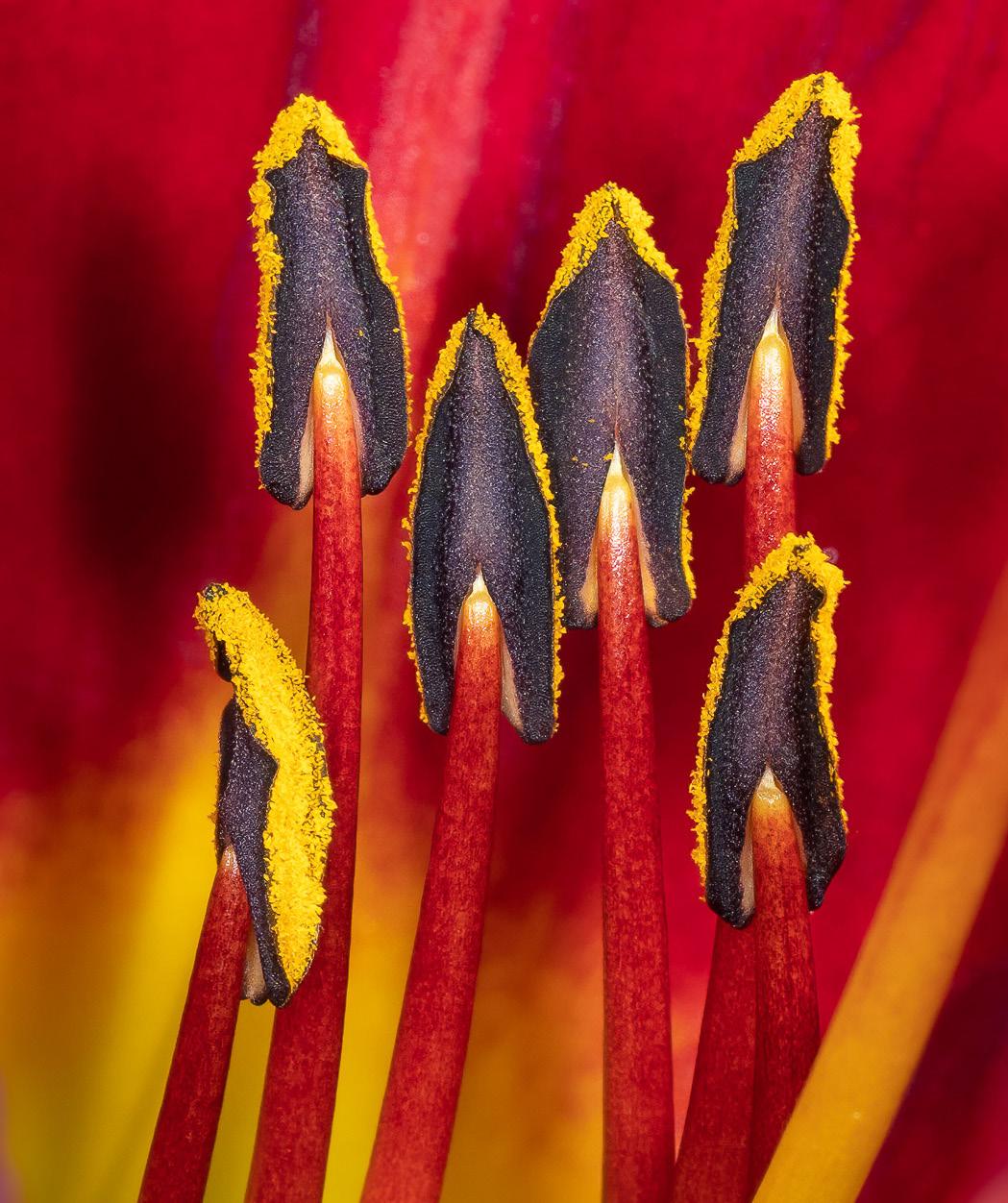
Nov. 16, 9:30 a.m.-12:30 p.m. or 1:30-4:30 p.m.
This seasonally-inspired class is designed for beginner to intermediate artists who may have done a little drawing, but who want to grow and learn. Art instructor and artist Aryn Lill will help burgeoning artists develop techniques using line weight, color, layering and blending to create a colored pencil rendering of autumnal gourds. Participants will also learn fundamental artistic skills such as shading, composition, perspective and shape to achieve a pleasing composition. Cost is $79/$97, including supplies.

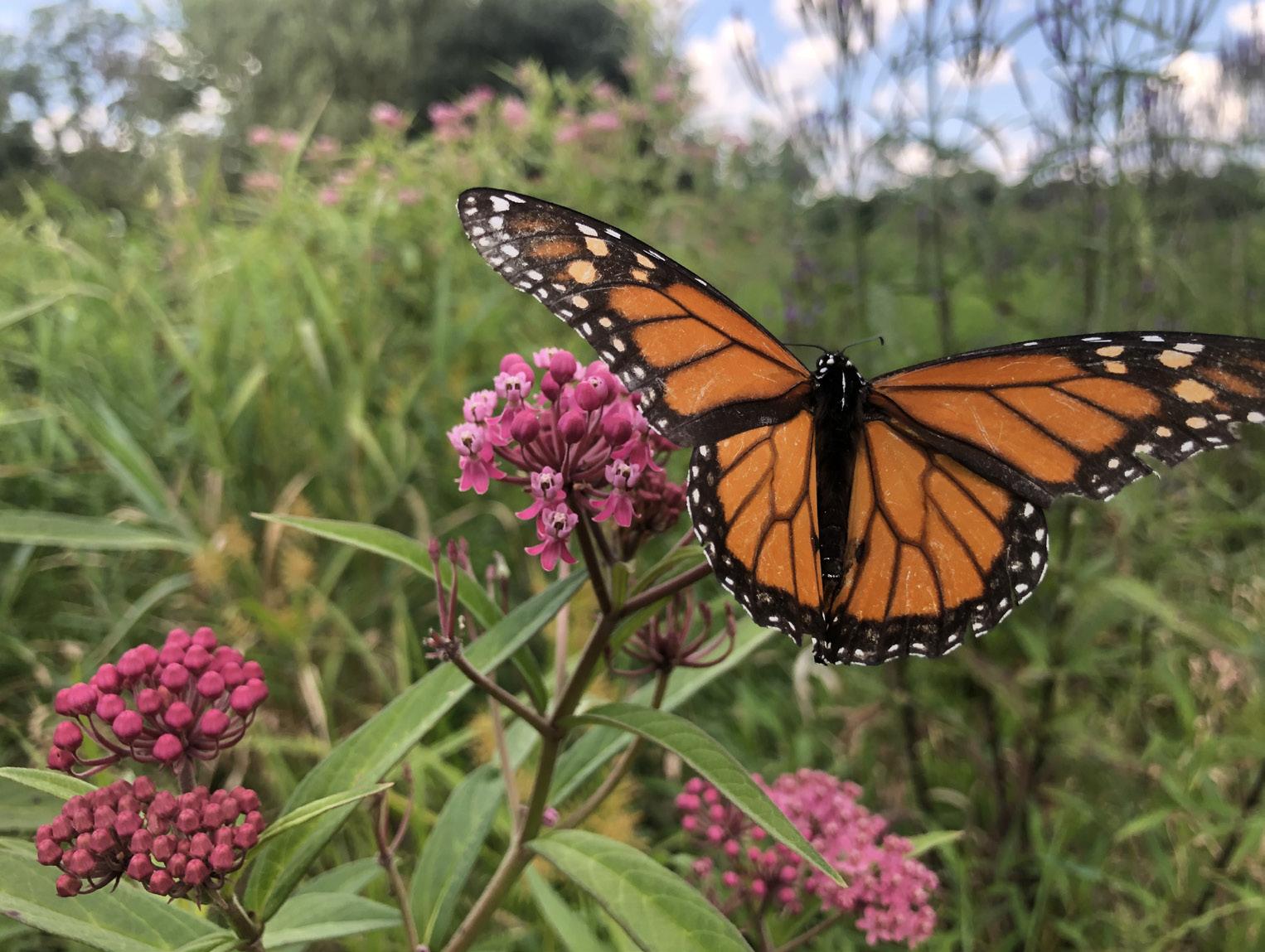
Oct. 27, 1-3 p.m.
Join experts from the Monarch Joint Venture to learn the best ways to support monarch butterflies and other pollinators. After an overview of the monarch butterfly life cycle, including their habitat needs and migration, participants will learn about actions to take at home and in their communities to help monarchs. Plus, take home milkweed seeds and instructions for how to plant them. Cost is $45/$65.

Nov. 19, 9-11 a.m.
Did you eat a plant today? That’s the theme for this family-friendly event that invites kids ages 3-5 with an adult to discover the many foods that come from plants. Go grocery shopping in our greenhouse: Which food plants grow in Minnesota and which grow far away? Spark your child’s appreciation for nature’s beauty through planting, art, sensory activities and science discovery. Cost is $15/$35 for one child and one adult.
Nov. 30, 10 a.m.-noon
Kokedama means “moss ball” and is a traditional Japanese art form in which a plant’s root system is wrapped in soil and moss, then bound with string. Join floral designer Susan Snegosky for this fun workshop where you will create your own kokedama that can be hung by string or displayed on a decorative plate. Cost is $85/$105, including supplies.
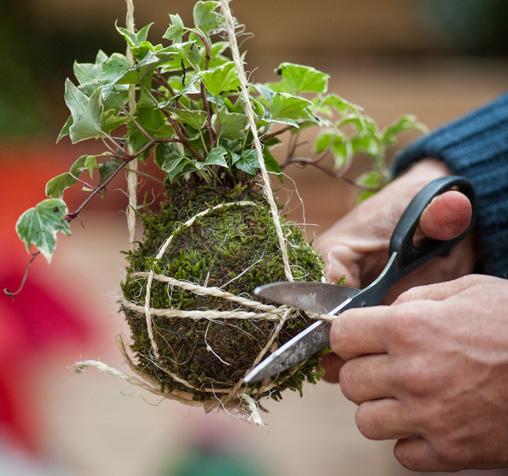
3675 Arboretum Drive
Chaska, Minnesota 55318-9613





For more information on upcoming art exhibitions — including Meet & Greet events — visit arb.umn.edu/art.
REEDY GALLERY
Beyond Boundaries: An Exploration of Indigenous Art Through Nov. 17
Discover a world where culture, tradition and imagination intertwine through the eyes of six Indigenous artists, including exhibit co-curator Heather Friedli. Working in an array of mediums, this body of work transcends limitations and embraces creativity, culture, tradition and imagination through techniques passed down through generations mixed with bold experimentation and modern interpretations.
Water, Earth, Sky | Nov. 20-Jan. 12
The Project Art for Nature (PAN) is a collaborative group of artists and illustrators dedicated to celebrating the beauty of the natural world. Working in a variety of creative processes, the 11 artists in this exhibition share a collective curiosity for how nature works and a commitment to preserving the environment for the wellbeing of the Earth and all its inhabitants.
CAFE GALLERY
Bringing the Outdoors In | Through Oct. 29
Artists Rachele Krivichi and Deanna Mayer immerse themselves in the outdoors, noticing colors, textures and materials to create artwork that transforms and enriches indoor spaces. Krivichi’s multimedia works in acrylic and collage illustrate the interplay between nature and the intimate world of the interior, while Mayer’s botanical bas-relief sculptures capture and preserve a moment in time.
Fusion of Light and Brush | Nov. 1-Jan. 6
This exhibition invites viewers to step into a landscape where the boundaries between painting and photography blur, merging into a captivating tapestry of visual storytelling. Artist Lonnie Brodon harnesses both the paintbrush and the camera to explore new dimensions of expression in her work. The unique blend of realism and imagination results in pieces that beckon viewers to delve deeper into the creative process.
SKYWAY GALLERY
Poster Palooza | Through Jan. 24
This showcase of student creativity and library joy celebrates 50 years of the Andersen Horticultural Library at the Arboretum! Students from the College of Design bring the library's unique collections to life through vibrant posters that illustrate the fascinating stories behind the books and botanicals.
